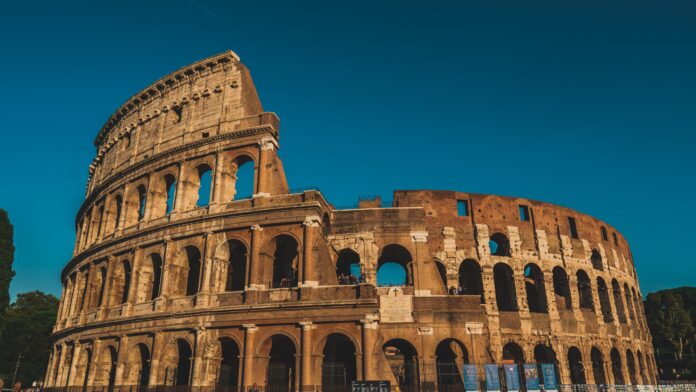The Roman Colosseum is an iconic symbol of ancient Rome. And a fascinating historical landmark that continues to intrigue visitors from all over the world. As one of the most visited tourist attractions in Italy, the Colosseum is known for its impressive architecture and engineering. As well as its bloody past as an arena for gladiatorial combat and other public spectacles.
Beyond its impressive history, the Colosseum has also been the subject of numerous myths and legends over the centuries. All of them have been added to its allure and mystique. From tales of ghosts and other supernatural beings haunting its halls to stories of emperors and gladiators. The mythology and folklore surrounding the Colosseum are as intriguing as they are diverse.
Historical Context: A Brief Overview of the Roman Colosseum
The Roman Colosseum, also known as the Flavian Amphitheatre, was built in the first century AD. It was during the reign of Emperor Vespasian. It took around ten years to complete and was used for various public spectacles. Including gladiatorial games, animal hunts, and mock sea battles.
The Colosseum was an impressive feat of engineering, with a seating capacity of up to 80,000 spectators. The building also featured an intricate system of tunnels and elevators. That allowed animals, gladiators, and other performers to be brought up to the arena floor.
The Colosseum has also been the site of numerous myths and legends over the years, adding to its allure and mystique.
Myths and Legends: Tales of Ghosts and Supernatural Beings
One of the most enduring legends surrounding the Colosseum is that of the ghost of Emperor Nero. Nero is said to haunt the building to this day. According to legend, Nero was responsible for the fire that destroyed much of Rome in AD 64. And it was he who ordered the construction of the Colosseum to appease the masses.
Another popular ghost story involves the spirit of a gladiator. Who roams the halls of the Colosseum seeking revenge on those who wronged him in life. According to legend, the gladiator was betrayed by his lover, who gave him a poisoned drink before his final battle. His ghost is said to haunt the Colosseum to this day, seeking revenge on those who wronged him.
Famous Myths and Legends: Emperors and Gladiators
The Colosseum has also been the subject of numerous myths and legends involving emperors and gladiators. One of the most famous stories involves Emperor Commodus, who was known for his love of gladiatorial combat. According to legend, Commodus once fought in the arena disguised as a gladiator. Killing numerous opponents before revealing his true identity to the shocked crowd.
Another popular story involves the gladiator Spartacus, who led a rebellion against the Roman Empire in the first century BC. According to legend, Spartacus was once imprisoned in the Colosseum before being executed in the arena. His spirit is said to haunt the building to this day, seeking revenge on his former captors.
Analysis: The Role of Mythology and Folklore in Shaping Historical Understanding
While many of the myths and legends surrounding the Colosseum may seem far-fetched. They play an important role in shaping our understanding of historical events. These stories offer a unique perspective on the people and events of ancient Rome, allowing us to see the Colosseum not just as a historical artifact, but as a living, breathing entity with a rich and fascinating history.
Furthermore, the enduring popularity of these myths and legends speaks to the power of storytelling. And the human desire for a sense of mystery and intrigue. By exploring these myths and legends, we are able to connect with the past in a way that goes beyond. Mere historical facts and engage with the stories and legends that have shaped our understanding of the world around us.
Conclusion: The Enduring Significance of the Roman Colosseum
The Roman Colosseum is not just an impressive historical landmark, but also a source of enduring fascination and intrigue. Its impressive history, combined with the numerous myths and legends that have been woven around it over the centuries. Make it a truly unique and fascinating destination for visitors from all over the world.
As we continue to explore the mythology and folklore of the Roman Colosseum. We gain a deeper understanding of the people and events that have shaped parts of our world. And a greater appreciation for the power of storytelling and the enduring significance of historical landmarks like the Colosseum. Whether we are drawn to the ghosts and supernatural beings said to haunt its halls or the stories of emperors and gladiators that have become part of our cultural consciousness, the Colosseum remains a symbol of our enduring fascination with the past, and a testament to the power of human imagination and creativity.
And as always folks feel free to check out The Global Growth Forum for similar articles. And for Hindi articles check out Mojo Patrakar.








